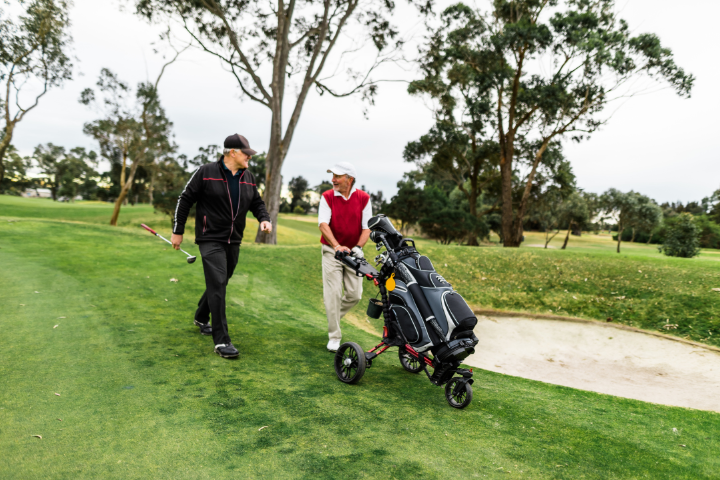During retirement, we may draw upon one or more sources of income to fund our retirement years.
These sources can be retirement savings (super and non-super), potential social security entitlements, and income from work.
In terms of drawing upon income from work, this appears to be increasingly more prevalent.
For example, when looking at the long-term data* on the workforce participation rate for Australians aged 65 and older:
- In January 2000, the workforce participation rate was 5.7% (9.1% for men and 3.0% for women).
- In January 2010, the workforce participation rate was 9.9% (11.4% for men and 4.4% for women).
- In January 2020, the workforce participation rate was 13.7% (17.2% for men and 10.6% for women).
A recent study^ has highlighted the reasons why some of us continue to (or recommence) work either casually or part time for a period during our retirement years, including:
- Financial necessity.
- To keep active and busy.
- Self-esteem/part of self-identity.
- To make use of skills and experience.
- Personal enjoyment and satisfaction with work.
- Sense of obligation, belonging and camaraderie.
- Too young to retire/don't feel ready to retire yet.
Importantly, there are Government incentives to encourage those of us willing and able to work in our retirement years. For example, the Work Bonus is an income test concession for Age Pension recipients who are working. However, it also extends to, for example, Disability Support Pension and Carer Payment recipients over Age Pension age.
As background, the Age Pension is available to older Australians who meet eligibility tests with regards to age, residency, income and assets. And, in terms of the rate of payment of the Age Pension, this is calculated under both an income test and an assets test, with the test that results in the lower rate (or nil rate) being applied.
Please note: The maximum total rate of the Age Pension differs according to whether you are single (currently $944.30 per fortnight) or a member of a couple (currently $711.80 per fortnight each). However, the maximum total rate for each member of a couple separated due to illness is the single rate.
Before diving into the Work Bonus, the below table provides an overview of the Age Pension income test.
|
Income Test* (20 March - 30 June 2020) |
||
|
Family Situation |
Homeowners and Non-homeowners |
|
|
For full pension (per fortnight)^ |
For part pension (per fortnight)# |
|
|
Single |
Up to $174 |
Less than $2,062.60 |
|
Couple (combined) |
Up to $308 |
Less than $3,155.20 |
|
Illness separated couple (combined) |
Up to $308 |
Less than $4,085.20 |
*Some assets are deemed to earn income, whilst there are special rules for other types of income. Furthermore, the Work Bonus may be applicable if you are earning income from work.
^Income over these amounts reduces the rate of pension payable by 50 cents in the dollar (single), 25 cents in the dollar each (for couples).
#These amounts may be higher if Rent Assistance is paid with your pension.
So, how does the Work Bonus fit into the income test? From 1 July 2019, the first $300 of income from work, is excluded from the income test each fortnight. Importantly, this exclusion encompasses the following:
- Employment income paid while you are working as an employee in an employer/employee relationship. Examples can include salary, wages, leave payments, commissions, fringe benefits, and bonus payments.
- Gainful work income earned through self-employment where the work involves personal exertion (active participation). Examples can include operating a business as a plumber, farmer, or bookkeeper.
- Please note: Personal exertion does not extend to managing or administering an investment portfolio or rental property owned by you or your family (including a family trust or family company), nor does it extend to work of a domestic nature at your place of residence.
This means, for example, if you are a single pensioner, you could earn up to $474 a fortnight in income from work and, subject to other sources of income and the assets test, receive the maximum rate of the Age Pension.
Another feature of the Work Bonus is the Work Bonus balance, whereby any unused amount of the $300 fortnightly concession can be accrued, to a maximum of $7,800, and used to offset future income from work.
If it’s unused, the credit balance of your Work Bonus balance carries forward across financial years, for the rest of your life. And, if you stop receiving the Age Pension for a period, the credit balance of your Work Bonus balance is retained and reactivated upon resumption.
Please note: The Work Bonus applies to each individual pensioner, and can’t be shared by a pensioner couple. However, by having the Work Bonus applied to your income from work, this affects your combined income, which in itself may be of benefit to your partner.
Lastly, whilst you don’t need to apply for the Work Bonus, you must keep Centrelink informed of your income, as the Work Bonus can only be applied to income from work that has been reported.
Moving forward
For various reasons, some of us may continue (or recommence) work for a period of time during our retirement years. This can see us drawing upon one or more sources of income to fund our retirement years.
Importantly, where this is the case, the application of the Work Bonus to our income from work may be beneficial – raising the point at which our income starts to negatively impact our Age Pension entitlements.
If you have any questions regarding this article, please contact us.
*Australian Government, Australian Bureau of Statistics. (2020). 6291.0.55.001 Labour Force, Australia, Detailed.
^Irving, J., Kulik, C., Pocock, B., and Charlesworth, S. (2017). Work well; retire well: findings from the Work, Care, Health and Retirement: ‘Ageing Agenders’ Project 2017.


